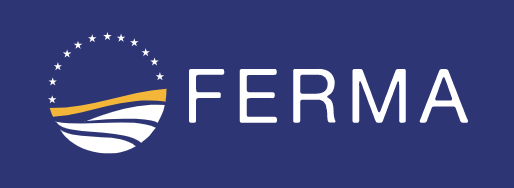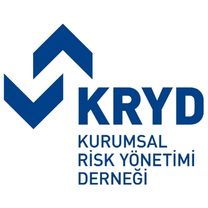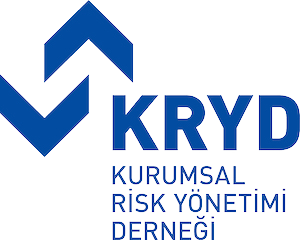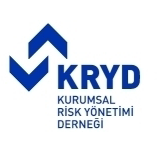
PURPOSE
The Enterprise Risk Management Association, established on April 28 2009, gathers all risk management professionals operating in the non-financial industries of Turkey under the same roof and aims to:
* Strengthen corporate performance by making risk management, insurance and related concepts effective and widely applicable,
* Make contributions to the development to the national economy,
* Increase professional collaboration and recognition
est.2009
AREA OFACTIVITY
In order to achieve its objectives, the Enterprise Risk Management Association carries out the following activities:
* Carrying out efforts to organize risk and insurance management activities in Turkey, improve their qualities and standardize them, and making sure that they are applied in practice;
* Organizing or contributing to educational and training programs, seminars, symposiums and conferences related to both training and professional development of its members,
* Carrying out purpose and work area research with sub-committees and expert groups to be established within the association; making examinations and investigations; determining wishes and proposals; establishing research and development centers; constituting a data bank; creating and implementing income-generating projects on purpose and service matters.
MISSION
The Enterprise Risk Management Association aims to establish and sustain the concept of Enterprise Risk Management in all non-financial sectors, additionally, aims to be a platform that makes information available on the improvement of risks and opportunities data gathered by the exploration and research of not only financial but also non-financial (legal, reputation, human resources, etc.) issues in the globalized and ever-changing environment.
VISION
It is Enterprise Risk Management Association’s vision to bring together all risk management professionals from non-financial industries in Turkey under the same roof in order to enhance collaboration and raise awareness, furthermore, to increase the performance of institutions by making risk management, insurance and related concepts effective and widely applicable, thus contributing to the development of the national economy.
Since October 2009, the Enterprise Risk Management Association has become a member of FERMA-Federation of European Risk Management Associations, which was established in 1974 and has more than 4,000 individual members. Furthermore, with its membership to FERMA, our association aims to create a common culture regarding Risk Management and Insurance operations in Europe, additionally, develop practices for risk management, and set an international benchmark for professionals in this field. Federation of European Risk Management Associations (FERMA) membership is crucial for the Corporate Risk Management Association to exchange experiences and information among organizations with a similar vision in European countries. Moreover, the Corporate Risk Management Association will have the opportunity to represent our country via this membership on an international setting where each country is represented by a single association.
Our Board of Directors
Charter
ESTABLISHMENT
ARTICLE 1 : “Enterprise Risk Management Association (ERMA)” was established within the framework of the laws and the provisions of this Charter, in order to realize the working subjects in accordance with the purposes defined in the Charter.
The Institutional Risk Management Association is referred to by the short name "ERMA" in the following articles.
NAME AND HEADQUARTERS OF THE ASSOCIATION
ARTICLE 2: The name of the association is “Enterprise Risk Management Association (ERMA)”.
The Enterprise Risk Management Association (ERMA) will carry out its activities from its headquarters in Istanbul. The association has no branches. The resolution to open a branch is evaluated by the General Assembly upon the proposal of the Board of Directors.
The association is established as a non-profit institution for an unlimited period of time.
DEFINITIONS
ARTICLE 3 : The following terms, words and abbreviations have the meanings set forth against them within the meaning of this Charter:
Association: ENTERPRISE RISK MANAGEMENT ASSOCIATION (ERMA),
Charter: Articles of the Charter of the Association,
Headquarters : Association Center located within the boundaries of Istanbul Metropolitan Municipality,
Members : The full and honorary members of the association,
General Assembly: The highest decision-making body of the Association, composed of all the full members of the Association,
Board of Directors : The governing body of the association authorized by the General Assembly,
President of the Association : Chairman of the Association's Board of Directors,
Law of Associations: Law of Associations No. 5253 (with amendments),
PURPOSE OF THE ASSOCIATION
ARTICLE 4:
The purpose of the association; In accordance with the principles stipulated by the Constitution of the Republic of Turkey and the relevant laws, by uniting all professionals operating in the field of risk management in Turkey under a single roof, to increase professional cooperation, to raise awareness of its members on risk management, insurance and related issues, to strengthen the performance of institutions by making these notions widely applicable and, therefore, to contribute to the development of the country's economy, to contribute to the formation, development and continuation of risk and insurance management ethics, traditions and principles, fundamentals and standards in professional practice, to aid the professional progress of its members and to contribute to the professional progress of the profession itself and to ensure that the profession will only be carried out by qualified personnel by organizing works, to represent its members in national and international platforms before public and private institutions with Inestek, and to establish the certification system related to the profession.”
WORK SUBJECTS
ARTICLE 5: In order to achieve the objectives stated in the above article, the Association works on the following and similar issues:
5.1
To carry out activities related to insurance and risk management in Turkey, to carry out works to raise risk and insurance qualities to a certain standard and to ensure their implementation in practice, and to support studies on this subject or other matters that will contribute alike;
5.2
To establish and to make a decision to join in established or to be established partnerships, funds and foundations in accordance with the procedures and principles specified in the Law of Associations in order to ensure and strengthen the social solidarity among the members of the profession; opening a club(s), organizing trips and all other social activities and initiatives;
5.3
To organize training programs, courses, seminars, symposiums and conferences or to contribute to such initiatives related to the training and professional development of its members;
To develop theories and practices in risk and insurance management, training and research on professional issues, and representing its members before public and private institutions;
5.5
Related to the profession, publishing books, magazines, etc., obtaining publishing rights, establishing an editorial board to carry out these activities, establishing copyrights and carrying out similar activities;
5.6
To represent its members in international and foreign professional organizations by obtaining the necessary permissions, to become a member, to represent these international and foreign organizations in Turkey, to exchange information and being a member of other professional organizations;
5.7
Carry out research, examination and studies in line with the purpose of the association and its work scope through sub-committees or expert groups to be established within the Association; determine proposals and wishes; establish research and development centers; establish a knowledge bank; prepare and implement income-generating projects on purpose and service matters.
METHOD OF WORK
ARTICLE 6: The association, in order to carry out its work on related issues in line with the above purposes,
6.1
Registers the real person and enterprise representative members who meet the conditions of the association, carries out all kinds of promotional and informative activities with the aim of gaining new members;
6.2
Organizes congresses, conferences, symposiums, panel discussions, forums, exhibitions, fairs, and trips which increase the professional knowledge, experience of its members; publishes and/or commissions others to publish brochures, newsletters, magazines, newspapers and books, and/or contributes other works underway related to publishing; benefits
from written and visual media to share the profession and its problems with the public; takes the necessary initiatives to participate in activities related to activities abroad;
6.3
Establishes and operates income-generating projects of partnerships, economic enterprises, companies, foundations and mutual aid funds, training centers and entertaining, relaxing and leisure time clubs and facilities in line with its aims and subjects;
6.4
Accepts/receives and gives donations and financial aids and aids in kind from all legal private and public institutions in compliance with the relevant Laws and Regulations;
6.5
It can purchase, rent, sell, rent out all kinds of movable and immovable properties and stocks and make any other kind of disposition regarding its purpose and working subjects; can borrow money and perform any activity, work and operation necessary to achieve its aims;
6.6
Provided that the Constitution of the Republic of Turkey and the relevant legislation are complied with, it carries out all other works not mentioned here in order to realize its aims and works.
FIELD OF ACTIVITY OF THE ASSOCIATION
ARTICLE 7: The association operates in the fields of education, culture and social aspects of risk and insurance management.
FOUNDERS OF THE ASSOCIATION
ARTICLE 8: The names and surnames, professions and arts, residences and nationalities of the founding members of the association are stated in the last part of the Charter.
ASSOCIATION EMBLEM
ARTICLE 9: The emblem of the association is shown in the appendix. The emblem of the association cannot be distributed, sold or used for any other purpose without the permission of the Board of Directors. The emblem is registered at the Istanbul Governor's Office and a Trademark is registered by the Turkish Patent Institute. A General Assembly resolution is required for a change of emblem.
THE RIGHT TO BE A MEMBER
ARTICLE 10 : The common condition for all kinds of membership is to be able to support works on risk and insurance management and related issues in Turkey. Natural and legal persons can become members of the association. The conditions for being a member of the association are shown below.
10.1. NATURAL PERSON
10.1.1) To have Capacity to Act,
10.1.2) Not to be permanently removed from any association membership and prohibited from being a member of associations for reasons other than non-payment of the association dues,
10.1.3) To obtain permission from the organizations to which they are affiliated in accordance with Article 3 of the Law of Associations, provided that there is no contrary provision in special laws,
10.1.4) Not to have been convicted of any infamous crime,
10.1.5) Not being included in the List of Persons and Institutions for whom a Prohibition of Transaction in the Stock Exchange and Other Organized Markets within the framework of Article 46/i of the Capital Markets Law,
10.1.6) To be suggested for membership to the Association by at least one member of the Association,
10.1.7) To pay the Association membership admission fee, in which is to be determined by the Board of Directors,
10.1.8) Being active in the field of Risk Management, being a risk and insurance manager/employee or retiring from the profession or leaving the profession voluntarily and/or carrying out academic
studies in this field,
10.1.9) Employees who have sales or customer relations responsibilities in insurance companies, employees of insurance intermediary companies (agency, broker) and employees of consultancy companies can become members of the association. However, the total number of said members cannot exceed 10% of the total number of members of the Association. Members who started to operate in such institutions after being a full member of the Association must notify the Association in writing, within one month at the latest, from the date of occurrence of the amendments. The board memberships of the members who started to operate in the above-mentioned types of institutions while being a full member or actively working under the organs of the Association are reviewed in consideration with the 10% membership rate quoted above.
Managers whose main field of activity is not professional agency but instead carrying out insurance activities of a group of companies are exempt from this article.
10.2. LEGAL PERSONS
10.2.1) To be established in accordance with Turkish laws,
10.2.2) Not to be deprived of the right to become a member of associations in accordance with the provisions of the Law of Associations No. 5253,
10.2.3) To make a written request to become a member of the association by the board or persons authorized to represent and bind the legal person,
10.2.4) Not to be on the list of Persons and Institutions for whom a Prohibition of Transaction in the Stock Exchange and Other Organized Markets has been imposed within the framework of Article 46/i of the Capital Market Law,
10.2.5) In case the companies become members by preserving their legal personality, the chairman of the Board of Directors or the representative person to be assigned to votes. When the chairmanship or representative duties of this person ends, the person who will vote on behalf of the legal entity is determined again by the relevant company and notified to the association.
MEMBERSHIP TYPES
ARTICLE 11: The membership types of the association are shown below.
11.1) FULL MEMBER:
They are real and legal persons who have undertaken all the obligations required by the membership of the association and benefit from the rights and responsibilities of membership. Rights of the members include running and voting for any position given that they satisfy the necessary conditions; their obligations are attending to meetings of special and general nature, abiding by the association charter, paying their dues on time, making necessary effort regarding the purposes and services and making the positive image of the association. A member who leaves or is expelled from the association cannot claim any rights in the assets of the association.
Legal entities vote through the Chairman of the Board of Directors or a representative person. When the chairmanship or representative duties of this person ends, the person who will vote on behalf of the legal person is determined again. The person who will use the power of representation on behalf of the legal entity must satisfy the membership conditions stipulated by the Association for natural person members.
Each legal person is represented by a maximum of one (1) person operating on behalf of this institution. Therefore, each legal person has one vote in the Board of Directors and the General Assembly. The person representing the legal entity is also considered as a full member and has the right to vote individually in the Board of Directors and the General Assembly. As a privilege to legal persons, a maximum of five (5) real persons operating in the institution have the right to attend the meetings of the Association other than the General Assembly and the Board of Directors meetings. However, the above provision is reserved for the representation of the legal person. From the moment they become a member, legal entities have the right to take part both in the activities of the association and on the website with their enterprise logos.
11.2) HONORARY MEMBER:
Members that can be elected upon the approval of the Board of Directors from among Turkish and foreign natural persons who are or may be involved in initiatives and operations regarding risk and insurance management in Turkey, and has a potential to contribute to the objectives and services of the association. Persons working in the financial sector can become honorary members. Honorary members are chosen among private individuals who have not committed the infamous crimes stipulated in the civil service law. Honorary members are exempt from paying the dues to be specified in the association's budget. They can attend the General Assembly, but cannot vote. They cannot benefit from the discounts provided to full members. Honorary members, if they meet the conditions of full membership, can change their memberships to full membership if they desire to do so. All members who are students are considered honorary members throughout their student life. In the event of the membership type change, the circumstances explained in Article 10 of the Charter are taken into account.
MEMBERSHIP PROCEDURES
ARTICLE 12: Association membership procedures are shown below:
12.1. MEMBERSHIP ADMISSION
12.1.1. FULL MEMBERSHIP ADMISSION
12.1.1.1. REAL PERSON FULL MEMBERSHIP
12.1.1.1.1) Candidates wishing to become members of the Association must fill out the "Membership Application Form," signed by at least one (1) member of the Association, stating that they have accepted the provisions of the Association Charter and that they contain the required conditions specified in the Regulation.
12.1.1.1.2) They shall submit four photographs, a copy of the identification card and a certificate of residence to the Chairman of the Association on the application form.
12.1.1.1.3) If it is determined that the candidate fulfills all the conditions and has no obstacles for membership, membership procedures are started.
12.1.1.1.4) The Board of Directors shall pass a resolution by majority of votes within thirty (30) days from the date of the application for membership, in the event of acceptance or rejection of membership The Board of Directors shall notify the applicant of the result in writing.
12.1.1.1.5) After the acceptance of a request for membership by a majority vote, the candidate is recorded in the "Association Membership Book" and given a "Membership ID Card".
12.1.1.1.6) Upon the admission of the candidate to the Association membership, his/her identity shall be entered in the "Association Member Book" and a "Member Identity Document" shall be submitted. The required portion of Annual Fee and Admission fee is collected. Membership of the Association cannot be acquired unless these payments are made.
12.1.1.2.) LEGAL PERSON FULL MEMBERSHIP
12.1.1.2.1) In the case of legal person membership, the "Membership application”, that states the legal person accepts the provisions of the charter and satisfies the requirements stated in the charter, is filled out and signed by at least three members of the association is presented alongside with a photocopy of the resolution of the board of directors or written statement of the representative and certificate of authorization, signature circular, trade registry gazette, certificate of residence of the representative, identification card copies and 4 photographs to the Chairman of the Association.
12.1.1.2.2) The Board of Directors shall resolve, by majority vote, any acceptance or refusal of membership within thirty (30) days at the latest after the submission of the membership application, and notify the applicant legal person of the result in writing,
12.1.1.2.3) Once the candidate is accepted as a member of the Association, it is entered into the “Association Member Book”. The required portion of Annual Fee and Admission fee is collected. Membership of the Association cannot be acquired unless these payments are made.
12.1.2. ADMISSION TO HONORARY MEMBERSHIP
12.1.2.1) When an individual who has made significant contributions to the achievement of the objectives of the Association applies, the Board of Directors carries out a research to determine whether these claimed qualities exist.
12.1.2.2) Within 30 days of the application at the latest, the Board of Directors arrive at a resolution regarding the membership whether it shall be approved or rejected and the result is sent to the applicant in writing.
No one can be compelled to become a member of the Association.
TERMINATION OF MEMBERSHIP ARTICLE 13:
Regardless of the type of association membership, it expires for the following reasons:
13.1) Death of the Member: Membership ends with the death of the member.
13.2) Withdrawal from Membership: Each member has the right to leave the association, provided that he or she notifies the association in writing.
As soon as the Board of Directors receives the resignation letter of the member, the withdrawal process is considered complete. The member’s resignation does not terminate their accumulated debts to the Association. The member who leaves the association is deleted from the registry and cannot claim any rights in the association's assets.
13.3) Expulsion from Membership: The reasons for expulsion from membership of the association are shown below:
13.3.1) Failure to attend two consecutive Ordinary General Assembly meetings without an excuse, failing to perform the assigned duties, and thus being indifferent to the Association, its purpose and service areas,
13.3.2) To act in a manner that falls within the scope of the provision that abolishes the right to be a member of associations, and to act against the provisions of the Charter and the resolutions of the General Assembly and the Board of Directors;
13.3.3) To take legal action on behalf of the Association without being authorized, therefore to put the Association under debt and liability,
13.3.4) To perform actions and procedures that may obstruct or hinder the fulfillment of the purpose of the Association,
13.3.5) Not fulfilling their obligations until the first Ordinary General Assembly meeting after receiving the verbal and written warnings for not paying all their dues and thus not being accepted to this General Assembly,
13.3.6) To act in a way that harms the honor and dignity of the Association,
13.3.7) Conviction for any infamous crime.
The member shall be removed from membership by a resolution of the Board of Directors upon the determination of any of the aforementioned conditions. Members who are dismissed from the Association shall be removed from the members' registry book and they shall not make any claims in the assets of the Association.
ASSOCIATION BODIES
ARTICLE 14: The Association has a total of three (3) bodies. The bodies of the association are shown below. However, other bodies
may be established ,as required, by the decision of the General Assembly.
14.1 General Assembly
14.2 Board of Directors
14.3 Board of Auditors
GENERAL ASSEMBLY
ARTICLE 15: The General Assembly is the highest body of the Association and consists of the registered members of the Association. The General Assembly shall convene every two years as the ordinary elected and fiscal general assembly and (ii) as the ordinary financial general assembly each year in March in the location the Association is registered with. The General Assembly shall be convened by the Board of Directors.
The General Assembly shall also convene for extraordinary meetings in cases deemed necessary by the Board of Directors or the Board of Auditors or upon the written request of one-fifth of the members in thirty days.
If the Board of Directors does not convene the General Assembly; upon the application of one of the members, the magistrate shall assign the task of calling the three members to the General Assembly.
GENERAL ASSEMBLY CALLING METHODS
ARTICLE 16: Methods to be applied in calling the General Assembly to the meeting are shown below.
16.1) The Board of Directors draws up the list of members who have the right to attend the General Assembly in accordance with the Association's charter.
16.2) Members who have the right to attend the General Assembly are to be called to the meeting are notified at least fifteen (15) days in advance, by announcing the day, time, place and agenda in a gazette or by notifying them in writing or by e-mail. The date, time and location of the second meeting to be held in case the meeting cannot be held due to lack of quorum shall also be specified in this notice. The period between the first meeting and the second meeting cannot be less than seven (7) days or more than sixty days.
16.3) If the meeting is postponed for any reason other than lack of quorum, this shall be announced to the members by stating the reasons for postponement, in accordance with the call procedure for the first meeting. The second meeting must be held within six months at the latest from the date of adjournment. Members are called back to the second meeting in accordance with the principles specified in the first paragraph.
16.4) The General Assembly meeting cannot be postponed more than once.
GENERAL ASSEMBLY PROCEDURE
ARTICLE 17: The principles to be applied in the General Assembly meetings are shown below.
17.1) General Assembly shall convene with the simple majority of the members that are entitled to attend the meeting, and in the event of amendment of the charter and dissolution of the association, with the participation of two-thirds. in the event of postponing the meeting due to lack of quorum, the second meeting shall not be attended by the majority. However, the number of members attending this meeting cannot be less than twice the total number of members of the board of directors and supervisory board.
17.2) The list of members who are entitled to attend to the General Assembly shall be made available at the place of the meeting. Identity cards issued by public authorities are to be presented by members to enter to the place of the meeting and shall be checked by the Board of Directors or persons assigned by the Board of Directors. Members shall enter the place of meeting by putting their signatures against the name(s) in the list made by the Board of Directors. 17.3) In the event the meeting quorum is satisfied, the situation shall be determined with a written record and the meeting shall be opened by the Chairman of the Board of Directors or one of the members of the Board of Directors designated by the Chairman. If the meeting quorum is not met, a minute is drawn up by the Board of Directors.
17.4) After the opening, a chairman and a sufficient number of vice-chairmen and a clerk are elected to manage the meeting, and a council committee is formed.
17.5) When electing the Association’s bodies, the members who cast votes are required to present their identity cards to the Meeting Council and sign across their names on the attendance list.
17.6) The management and security of the meeting is the responsibility of the chairman of the council,
17.7) In the General Assembly, only the items on the agenda are discussed. However, it is obligatory to include on the agenda the issues that are requested to be discussed in writing by one-tenth of the members present at the meeting.
17.8) Each member has one vote in the General Assembly; The member has to use the vote in person. Honorary members may attend general meetings but can not vote. If the legal person is a member, the chairman of the Board of Directors or the representative of the legal person votes.
17.9) Matters discussed and decisions taken at the meeting are recorded in a minute and signed jointly by the chairman of the council and the clerks. At the end of the meeting, the minutes and other documents are delivered to the Chairman of the Board of Directors. The Chairman of the Board of Directors is responsible for preserving these documents and delivering them to the newly elected Board of Directors within seven days.
17.10) The quorum for resolution at the General Assembly is one more than half of the members of the General Assembly. However, a quorum in the relevant articles is required for the amendments in the Charter and for resolutions regarding the dissolution of the Association.
PROCEDURES AND METHODS FOR VOTING AND MAKING DECISIONS IN THE GENERAL ASSEMBLY
ARTICLE 18:
18.1. Unless otherwise decided in the General Assembly, the elections of the members of the Board of Directors and the Board of Auditors are voted by secret ballot, and decisions on other issues are voted openly. Secret votes are pieces of ballot stamped by the Chairman of the Meeting, after the members carry out the voting the ballots are cast into an empty container, then the ballots are open counted.
18.2. In open voting, the method specified by the Chairman of the General Assembly is applied. Decisions of the General Assembly are taken by the absolute majority of the members attending the meeting. However, the decisions to change the charter and the dissolution of the association can only be taken with a two-thirds majority of the members attending the meeting.
DECISIONS MADE WITHOUT ASSEMBLY OR CALL
ARTICLE 19:
19.1. The decisions taken with the written participation of all members without attending in person and the decisions taken in an assembly in non-compliance with the call and convene procedures and methods are valid. Taking decisions in this way does not replace the ordinary meeting.
EXTRAORDINARY GENERAL ASSEMBLY
ARTICLE 20: The Extraordinary General Assembly is called for a meeting within one month at the latest by the Board of Directors in accordance with the applications and decisions shown below, and the extraordinary meeting is called on important and mandatory matters that cannot be waited until the ordinary General Assembly meeting or that it will be beneficial to be discussed as soon as possible.
20.1) Written and signed application of one fifth (1/5) of the number of members entitled to the right to vote,
20.2) The decision of the Board of Directors to be taken by two-thirds (2/3) majority of votes on the issues it deems necessary, and
20.3) Extraordinary General Assembly convenes in accordance with the unanimous resolution and principles to be obtained by the Board of Auditors regarding the Association's account transactions and the budget.
20.4) The Extraordinary General Assembly is proceeded with the methods and procedures of the General Assembly and only the subject(s) behind the meeting is discussed.
20.5) No proposal can be made to add an item to the agenda during the Extraordinary General Assembly.
DUTIES AND AUTHORITIES OF THE GENERAL ASSEMBLY
ARTICLE 21: The General Assembly is the highest decision-making body of the Association and its duties and powers are shown below:
21.1) To elect the principal and alternate members of the Board of Directors, Supervisory Board and Advisory Board,
21.2) To discuss and make decisions on the amendment draft for Association’s Charter prepared by the Board of Directors,
21.3) Discussing the reports of the Board of Directors and Supervisory Board and acquitting the Board of Directors,
21.4) Discussing and accepting the budget prepared by the Board of Directors as it is or by amending it,
21.5) To authorize the Board of Directors for the purchase of immovable properties required for the Association or the sale of existing immovable properties,
21.6) Examining the regulations submitted for approval by the Board of Directors regarding the activities of the association, and arriving at a decision by accepting amending them,
21.7) Determine the amount of remunerations and all kinds of allowances, traveling expenses and compensations to be paid to the chairmen and members of the Board of Directors and the Board of Auditors of the Association who are not civil servants, and the day rates and traveling expenses to be paid to the members appointed for the services of the Association,
21.8) To decide whether the Association joins or leaves the Federation,
21.9) Deciding that the Association establish a Foundation,
21.10) To decide on the dissolution of the Association and the liquidation of its assets,
21.11) To fulfill the duties specified to be so in the General Assembly via by law or by the charter,
21.12) Inspection of other organs of the Association and their dismissal for justifiable reasons when deemed necessary,
21.13) To make a decision on the objections against the resolution of the Board of Directors of those who have been dismissed from the membership of the Association,
21.14) As the most authoritative organ of the association, performing the works not handed to another organ of the association and exercising their powers
21.15) To take the necessary decisions in line with the laws of the Republic of Turkey and the provisions of the Association's Charter,
21.16) Deciding on the establishment of an economic enterprise/ dissolution of the established ones in order to generate income for the Association
FORMATION OF THE BOARD OF DIRECTORS
ARTICLE 22: The formation of the Board of Directors, which is the governing body
of the Enterprise Risk Management Association (ERMA) authorized by the General Assembly, is given below.
22.1) The Board of Directors consists of 9 principal and 5 substitute members elected from among the real person members of the Association or representatives of legal person members for a period of (2) years. The term of office begins following the General Assembly meeting in which the election is held.
22.2) The Chairman of the Board of Directors is elected by the decision of the General Assembly, except for the resignation of the current chairman. In case the current chairman resigns, the Board of Directors elects the new chairman from among the members of the Board of Directors. A chairman cannot be elected as chairman by the General Assembly more than three times in a row. The resignation of the current chairman and the election with the Board of Directors are not taken into account within these three times in a row of election.
22.3) At the first meeting after the election, the Board of Directors determines the chairman, vice-chairman, secretary, treasurer and member by resolution under the direction of the Chairman elected at the General Assembly. Members of the Board of Directors cannot be elected to the same task more than three times in a row.
22.4) The Board of Directors can be called for a meeting at any time, provided that all members are notified. The Board of Directors convene with the presence of one more than half of the total number of members. Decisions are taken by the absolute majority of the total number of members attending the meeting.
22.5) In the event that there is a vacancy in the full membership of the Board of Directors due to resignation or other reasons, it is obligatory to call the substitute members for duty according to the number of the majority of votes received in the General Assembly.
WORKING PRINCIPLES OF THE BOARD OF DIRECTORS
ARTICLE 23: The working principles of the Board of Directors are shown below:
23.1) The Board of Directors meets ordinarily at the Headquarters at least once a month and may hold extraordinary meetings when necessary.
23.2) The Board of Directors convenes with the presence of one more than half of the number of its members. Decisions are taken by the absolute majority in accordance to the total number of members attending the meeting.
23.3) The Board of Directors shall convene upon the call of the Chairman of the Association and in line with the agenda determined by the Chairman of the Association, in consultation with other members of the Board of Directors and carries out its work.
DUTIES AND AUTHORITIES OF THE BOARD OF DIRECTORS
ARTICLE 24: Duties and Authorities of the Board of Directors are shown below:
24.1) Representing the Enterprise Risk Management Association (ERMA) through the Chairman of the Association or authorizing other members when necessary,
24.2) To make the transactions related to the income and expense accounts and to prepare the budget for the next period and present it to the General Assembly,
24.3) With the authorization given by the General Assembly, purchasing immovable property, selling movable and immovable properties belonging to the association, constructing a buildings or facilities, making a lease agreements, establishing real rights in favor of the association,
24.4) To establish representative offices where deemed necessary,
24.5) To make a decision on the admission or expulsion of members from the Association,
24.6) To take and implement all kinds of decisions in order to realize the purpose and aim of the Association,
24.7) To perform other duties and to use the authorities given to it by the legislation,
24.8) To take and implement decisions that increase the activities of the association in accordance with the laws of the Republic of Turkey and the provisions of this Charter,
24.9) To prepare the activity report, balance sheet and income and expense charts of the last working period and present them to the attention of the General Assembly,
24.10) To prepare the activity program for the working period, annual budget regulation and income-expenditure charts, presenting them to the attention of the General Assembly and implementing them,
24.11) To determine the date, time, place and agenda of the General Assembly meetings and to announce them to the members,
24.12) Establishing committees to work in line with management and service issues and taking the necessary decisions about their reports,
24.13) To appoint the personnel and consultants who will carry out the affairs of the Association and to terminate their employment when necessary,
24.14) Deciding to use the incomes generated for the purpose of establishing a partnership, economic enterprise, foundation and charitable funds or participating in existing and future organizations and submitting this decision for the approval of the General Assembly, provided that it does not provide any benefit to the Board of Directors and/or Association members and that these incomes are allocated only for the purpose of the Association;
24.15) To make legislative amendments in the amendment of the charter and to submit the necessary drafts for approval by the General Assembly,
24.16) To inform the members and related parties about and implement the resolutions adopted at the General Assembly meetings,
24.17) To receive the assets of the Association from the Board of Directors in accordance with its duty and balance sheet, and to deliver the assets of the Association to the Board of Directors for the next working period,
24.18) Deciding to have an external audit.
BOARD OF AUDITORS
ARTICLE 25: The Board of Auditors is elected by the General Assembly as three principal and three substitute members.
In the event there is vacancy in the Board of Auditors due to resignation or other reasons, it is obligatory to call the substitute members to take office in the order of the majority of the votes obtained at the General Assembly.
DUTIES AND AUTHORITIES OF THE BOARD OF AUDITORS
Board of Auditors inspects, in accordance with the association’s charter, at intervals not exceeding one year, whether the Association is conducting its activities in line with the objectives and aims specified in its charter, and whether the books, accounts and records are kept in accordance with the legislation and the Association's charter and reports the results of its audits to the Board of Directors and to the General Assembly when so convened.
Board of Auditors calls the General Assembly when necessary.
The Enterprise Risk Management Association (ERMA) is open to any kind of audit and responsible for fulfilling its internal audit function through the Board of Auditors.
The composition and working principles of the Board of Auditors are as follows:
25.1) The Board of Auditors elects a Chairman and a Spokesperson at the first meeting to be held within six (6) days following the election.
25.2) The Board of Auditors convenes at the latest within six months after the first meeting in order to obtain information from the Enterprise Risk Management Association (ERMA) and to ensure that records are kept regularly. The Board of Auditors convenes at the Headquarters at least once in twelve (12) months. Meeting and quorum of decision is two (2).
25.3) The Board of Auditors is responsible and authorized to periodically, three months at most, notifying the Board of Directors for the analysis of record related to the budget, account and transaction; remarking their wishes and suggestions in the meeting of the Board of Directors in which the issues of working period program prepared by the Board of Directors, budget regulation and income and expense statements are discussed; submitting to the General Assembly, with a report, the reviews of the preview working period prepared by the Board of Directors, the balance sheet and the income expense statements.
25.4) Internal audit is essential at the Association. The General Assembly, the Board of Directors or the Board of Auditors may conduct internal audits or independent audit companies may conduct the audit. Audits by the General Assembly, the Board of Directors or independent audit firms shall not release the liability of the Board of Auditors.
COMMON PROVISIONS
ARTICLE 26:
Members of the Board of Directors and the Board of Auditors shall be deemed to have left their respective boards if they do not attend 3 consecutive meetings without an excuse or more than half of the meetings held within a working period, even if they are excused.
When a member leaves the Board for any reason, the substitute members are called in order and new substitute members are elected. If the substitute member who takes office in order resigns, the next member is called.
EXECUTIVE UNIT
ARTICLE 27: The provisions regarding the Enterprise Risk Management Association (ERMA) Executive Unit are shown below:
27.1) Under the supervision and management of the Board of Directors, the Executive Unit is comprised of a sufficient number of personnel who are tasked with the task of implementing decisions made by the Association’s bodies, carrying out working principles, carrying out transactions and duties regarding the Association for local and economic businesses, foundations and solidarity funds, and providing services and operations for the Association.
27.2) The Secretary General coordinates the activities of the executive unit.
27.3) The working principles of the executive unit, duty names of its staff and personal rights are shown in the "Regulation on the Executive Unit."
WORKING COMMITTEES AND EXPERTISE GROUPS
ARTICLE 28: The Enterprise Risk Management Association (ERMA) may establish temporary or permanent working committees to assist with its purpose and operations.
28.1) Interim Committees shall be elected as the Chairman of the Association, while permanent committees shall be elected by the resolution of the Board of Directors. Committees and groups meet according to their working schedules. Meeting and decision quorum is absolute majority.
28.2) The Board of Directors and the Service Committees are also responsible for the decision making decisions of the Board of Directors and the Board of Auditors or for assisting the Executive Unit, conducting research, making recommendations and, when necessary, carrying out the implementation.
SECRETARY GENERAL AND TREASURY OFFICER ARTICLE 29:
29.1) Secretary General: Supervision and legal requirements of the everyday administration of the Association are fulfilled by a Secretary General elected by the Board of Directors from within the Board. Carried out with the approval of the Secretary General.
The duties and competencies of the Secretary General are determined by the Board of Directors.
29.2) Treasury Officer: The daily financial management of the Association is determined by the Board of Directors by the duties and competences of a treasury officer selected by the Board of Directors from among the board.
29.3) General Coordinator: The Board of Directors may appoint a General Coordinator to support the Secretary General in the day-to-day running of the Association. The General Coordinator may be elected from among the members of the Association or from outside. The duties and authorities of the General Coordinator and his/her personal rights are determined by the Board of Directors.
These tasks may be performed by the same or different individuals.
INCOME SOURCES OF THE ASSOCIATION
ARTICLE 30: The incomes of the Association are shown below:
30.1) Entry Fee: This is a one-time allocation that is provided for real and legal persons admitted to membership in each work period budget. The amount of this fee shall be determined by the Board of Directors.
30.2) Annual Fee: The amount of payment to be made for natural and legal person members within each working period’s budget, as determined by the Board of Directors and required to be paid during the tenure of membership. 30.3) Commercial enterprise incomes,
30.4) All domestic and foreign donations, wills and charities,
30.5) Income from training and working activities and social facility operations,
30.6) Incomes to be earned as per the Law on the Collection of Aid,
30.7) All kinds of operating income to be made appropriately for the purpose of the Association,
30.8) Other incomes,
30.9) The percentage of the incomes earned from the above mentioned sources within the year shall be used to achieve the purpose of the association. The remaining amount shall be used in the fields to be determined by the Board of Directors for future use.
ASSOCIATION BOOKS
ARTICLE 31: The rules and methods regarding the bookkeeping principle, registration, books to be kept and its approval are given below.
31.1) PRINCIPLE OF BOOK KEEPING; The Association shall keep books on the basis of balance sheet. However, if the limit is reduced to below the legally prescribed limit for two consecutive accounting periods, the operating account can be reverted from the following year on. The account of the Association shall be kept in a book according to the provisions of the Tax Procedure Law.
31.2) REGISTRATION PROCEDURE; The books and records of the Association shall be kept according to the principles and procedures stated in the Regulation on Associations.
31.3) BOOKS TO BE KEPT; The books approved by the notary public indicated below shall be kept for the Association.
31.3.1) Book of Resolutions: The resolutions of the Board of Directors are entered in this book in order of date and number, and the members that attend the meeting sign under the resolutions.
31.3.2) Member Registry Book: Identity information, admission and exit dates of membership of those that are admitted to the Association are entered in this book. Admission fees and membership dues paid by the members can be entered into this book.
31.3.3) Document Registry Book: Incoming and outgoing documents are entered in this book by their respective dates and sequence numbers. Originals of the incoming documents and copies of the outgoing documents shall be filed. Incoming and outgoing documents via electronic mail will be kept by taking their printouts.
31.3.4) Plant Ledger: The date and manner of acquisition and the place of use or allocation of the fixed assets belonging to the Association and the removal of those that have completed their term of use are entered in this book.
31.3.5) Books to be kept based on balance sheet; Journal, Ledger and Inventory Ledger. The procedures of keeping these books and the manner of registry shall be made in accordance with the principles of the Tax Procedure Law and the General Communiqués of Accounting System Application published under the authority delegated to the Finance Ministry by this Law.
31.3.6) Receipt Certificate Registry Book: Serial and sequence numbers of the documents of receipt, the names, surnames and signatures of the persons who received and returned these documents, and the dates of receipt and return them are entered in this book. The Association shall also keep other books required by the Law on Associations and related regulations and communiqués. If the keeping of any of the aforementioned books is not required by law, the Board of Directors of the Association shall decide at its own discretion as to whether to keep this book or not.
31.4) CONFIRMATION OF BOOKS; The books that are mandatory to be kept in the association shall be ratified by the provincial associations director or notary prior to use. These books shall be used until their pages are full and the books shall not be subject to interim ratification. Books kept on the basis of balance sheets and those with forms or continuous form pages must be re-ratified every year in the last month prior to the year they will be used.
INCOME STATEMENT AND BALANCE SHEET PREPARATION
ARTICLE 32: They shall be kept in books at the Association on a balance sheet basis. At the end of the year (31 December), the balance sheet and income statement shall be prepared based on the General Communiqués on the Accounting System Application published by the Ministry of Finance.
WORKING PERIOD AND BUDGET APPLICATIONS ARTICLE 33:
33.1.) The Enterprise Risk Management Association (ERMA) working period begins on January 1 and ends on December 31. 33.2) The budget of the Association shall consist of the Annual Budget Regulation and the income and expense statements.
33.3) The Annual Budget Regulation covers topics such as spending authorizations, authorities’ spending types, documents related to expenses and expenditures, and transfer authorizations for cash coins and articles.
33.4) Expenses and expenditures to be incurred during the period between the January 1 and the date of the General Assembly, when the budget becomes effective, shall not exceed the expenses of the previous year's budget for the same period.
INCOME AND EXPENSE TRANSACTIONS OF THE ASSOCIATION
ARTICLE 34: Income and expense documents;
34.1) Incomes of the Association shall be collected with a "Certificate of Receipt". In the event of collection of the Association's incomes through banks, documents prepared by the bank such as receipts or account statements shall stand for receipt documents.
34.2) Expenses of the Association shall be made by expenditure documents such as invoices, retail sales receipts, receipts for professional services. However, for payments of the Association under Article 94 of the Income Tax Law, an expense note shall be prepared in accordance with the provisions of the Tax Procedure Law, and for other payments, an "Expense Receipt" shall be prepared.
34.3) The delivery of goods and services that are provided by the Association free of charge to persons, institutions or entities should be made by an "In-kind Aid Delivery Document." The delivery of goods and services that are provided by persons, institutions or entities free of charge to the association is accepted with the "In-kind Donation Receipt Certificate".
DOCUMENTS OF RECEIPT
ARTICLE 35: The "Receipt Documents" to be used in the collection of the Association's incomes are printed to the printing house by the resolution of the Board of Directors. The provisions of the Regulation on Associations shall apply in the matters regarding the use of receipt documents and delivery of the income collected by the persons or persons that will collect income from former and new treasurers, the printing and recording of receipt documents, the delivery of receipt documents between former and new treasurers, and the delivery of the income collected.
CERTIFICATE OF AUTHORIZATION
ARTICLE 36: The person or persons to collect income on behalf of the Association shall be determined by a resolution of the Board of Directors by specifying the term of authorization.
The "Authorization Document" containing the explicit identity, signature and photograph of the persons collecting income, shall be prepared by the association in three copies and approved by the Chairman of the Board of Directors. One copy of the authorization certificates shall be given to the association units.
Amendments to the authorization certificate by the Chairman of the Board of Directors shall be notified to the association unit within fifteen (15) days. Persons to collect income on behalf of the Association may start collection of income only after the submission of a copy of authorization certificates drawn in their name to the associations unit.
The use, renewal, return and other issues of the certificate of authority shall be governed by the relevant provisions of the Regulation on Associations.
RETENTION PERIOD FOR INCOME AND EXPENSE DOCUMENTS
ARTICLE 37: Except for the books and provided that the terms specified in special laws, the receipt documents, expenditure documents and other documents used by the association shall be kept for 5 years in accordance with their number and date sequence at the books they are entered in.
DECLARATION ISSUANCE
ARTICLE 38: The Board of Directors of the Association fills out the "Declaration of the Association" regarding the activities of the Association for the previous year as well as the results of income and expense transactions as of the end of the year, and the Association President submits it to the highest civilian administration supervisor in the area in the first four months of each calendar year.
NOTIFICATION OBLIGATION
ARTICLE 39: Notices to the administrative chief;
39.1. GENERAL ASSEMBLY RESULT NOTIFICATION
"General Assembly Result Notification" including regular and substitute members elected to the boards of directors, auditors and other bodies, and its attachments shall be notified to the administrative chief by the chairman of the Board of Directors within thirty days following the Ordinary or Extraordinary General Assembly meetings. For the General Assembly Result Notification:
39.1.1) Sample of General Assembly meeting minutes signed by the president, vice chairmen and secretary,
39.1.2) If a change in the charter is made, the new and previous form of the amended articles of the charter and the copy of each page of the final version of the association charter signed by the Board of Directors shall be attached.
39.2. NOTIFICATION OF IMMOVABLES
Immovable properties acquired by the Association shall be reported to the administrative authority by completing the "Notification of Immovable Property" within thirty days from its registration at the title registry.
39.3. NOTICE OF RECEIVING HELP FROM ABROAD
In the event that the Association receives assistance from abroad, it shall fill out the "Notification on Receiving Assistance from Abroad" in two copies and submit it to the civilian administration authority before receiving such assistance
The notification form shall include the sample of the Board of Directors resolution for foreign assistance, the protocol, contract and similar documents prepared in this regard, if any, and the receipt of the account from which the aid has been transferred, as well as a copy of the additional and similar document.
It is mandatory to obtain cash assistance through banks and to fulfill the requirement to receive notification before use.
39.4. NOTIFICATION OF JOINT PROJECTS CONDUCTED WITH PUBLIC INSTITUTIONS AND ORGANIZATIONS
A copy of the protocol and the project regarding the joint projects carried out with public institutions and organizations on subjects pertaining to the area of duty by the Association shall be attached to the "Project Statement," and shall be given to the governorship of the place where the association headquarters is located within one month following the date of the protocol.
39.5. NOTIFICATION OF AMENDMENTS
Amendments in the locality of the Association shall be reported in the "Notification of Amendments in Residential Areas" as a result of the change in the location of the Association. Amendments in the organs of the association other than the General Assembly meeting shall be notified to the civilian administration authority within thirty days of amendments by completing the "Notice of Amendments to the Organs of the Association".
Amendments made to the Association Charter shall be notified to the civilian administration chief within thirty (30) days following the General Assembly meeting where the charter was amended, attached to the General Assembly notice of results.
INTERNAL AUDIT OF THE ASSOCIATION
ARTICLE 40: The General Assembly, the Board of Directors or the Board of Auditors may perform internal audits, or the Independent Auditing Firms may be audited within the Association. The fact that an audit has been performed by the General Assembly, the Board of Directors or independent audit companies does not relieve the Board of Auditors from their obligation. The Board of Auditors shall audit the association at least once a year. The General Assembly or the Board of Directors may conduct audits, if deemed necessary, or have the independent audit companies perform audits.
DEBT PROCEDURES OF THE ASSOCIATION
ARTICLE 41: In the event it is deemed necessary to realize the purpose and conduct the activities of the Association, it may take on debt by the resolution of the Board of Directors. This borrowing can be in credit purchasing of goods and services, as well as in cash. However, this borrowing cannot be made in amounts that cannot be covered by the income sources of the association and in a manner that puts the association into insolvency.
CHARTER AMENDMENTS
ARTICLE 42: Charter amendments can be made with the decision of the General Assembly. 2/3 majority of the members who have the right to attend the General Assembly are required in order to make amendments to the charter in the General Assembly. If the meeting is postponed due to lack of success, then the second meeting does not have a majority. However, the number of members attending this meeting cannot be less than twice the total number of members in the Board of Directors or the Board of Auditors.
The majority of the decisions required for amendment of the charter are two-thirds of the votes of the members who attend the meeting and have the right to vote. A vote of amendment to the charter is held at the General Assembly.
DISSOLUTION OF THE ASSOCIATION AND THE METHOD OF LIQUIDATION OF ITS ASSETS
ARTICLE 43:
43.1. TERMINATION OF THE ASSOCIATION The General Assembly may resolve for the dissolution of the Association at any time. A two-thirds majority of the members that are entitled to attend to the General Assembly shall be required to discuss the termination of the General Assembly. If the meeting is postponed due to lack of success, then the second meeting does not have a majority. However, the number of members attending this meeting cannot be less than twice the total number of members of the board of directors and supervisory board.
The quorum required for the termination decision is 2/3 of the votes of the members who attend the meeting and have the right to vote. At the General Assembly, a vote of dissolution shall be held clearly.
If the dissolution of the Association is decided, the liquidation shall be performed in accordance with Article 89 of the Regulation on Associations. The liquidation shall be completed by the Liquidation Committee to be elected from the last Board of Directors. Assets of the Association shall be transferred to the institution decided at the General Assembly. Upon the completion of the liquidation procedures, the liquidation committee shall notify the Property Administration Department about the minutes and other documents within one week.
43.2 LIQUIDATION PROCEDURES
When the General Assembly decides to terminate the contract, the liquidation of the association's money, goods and rights shall be carried out by the dissolution board, which is made up of the last Board Members. Such transactions shall commence on the date when the General Assembly decides on the termination or on the date when the automatic termination ends.
The name of the association shall be "Enterprise Risk Management Association (ERMA) in Liquidation" in all transactions during the liquidation period.
The committee is in charge of completing the liquidation of the association’s money, goods and rights in accordance with the legislation from start to finish. This board first reviews the accounts of the association. During the inspection, the books, receipt documents, expenditure documents, title deeds and bank records and other documents of the Association are identified and the assets and liabilities are recorded in a report. During the liquidation process, an invitation is made to the creditors of the association and the goods, if any, are converted into cash and paid to the creditors. In the event the association is a creditor, the receivables shall be collected.
All money, property and rights remaining after the collection of receivables and payment of debts are transferred to the location predetermined at the General Assembly. The place to be transferred is determined and transferred at the General Assembly.
If the place to be transferred is not determined at the General Assembly, it shall be transferred to the association that has the closest goal in the province, and the association that has the highest number of members on the date of termination.
All liquidation transactions shall be recorded in the liquidation minutes and the liquidation shall be completed within three months, except for the additional periods provided by the civil administration authorities based on a justified reason. Following the completion of the liquidation and transfer transactions for the funds, goods and rights of the Association, the liquidation board must report the situation within seven days to the administrative authority of the place where the headquarters of the Association is located and this liquidation report must also be attached to this letter.
The final members of the Board of Directors are responsible for keeping the books and documents of the Association under the title of the board of liquidation. This duty may also be delegated to a member of the Board of Directors. The storage period for these books and documents is five years.
LACK OF PROVISIONS
ARTICLE 44: The Law on Associations, Turkish Civil Code and the Regulation on Associations drafted with reference to these laws and the provisions of other relevant legislation on associations shall apply on issues not specified in this Regulation.
REGULATIONS
ARTICLE 45: The provisions of this Regulation shall be implemented in conjunction with the regulations to be drawn up and implemented by the Board of Directors.
PROVISIONAL ARTICLE 1.
The following are the provisional members of the Board of Directors of the Association to serve until the main and substitute members of the Board of Directors are elected at the first General Assembly of the Association:
Chairman of the Board Aysan Sinanlıoğlu
Member Cumhur Bilgili
Member Doğu Özden
Member Esin Rodoplu Kablan
Member Serdar Öngün
Member Gökçe Çitak
Member Gulsev Kutucu
Member Ülgen Armağan Demir
Member Serkan Siyasal
FOUNDERS OF THE ASSOCIATION
Founders of the Association shall have the following names, professions and arts and nationalities:
Alper UĞURAL - Mechanical Engineer - TR
Ferhan GÜZEY - Business Administration - TR
Mert BAYRAM - Risk Management - TR
Erol ULUKUTLU - Economics - TR
Emre ŞEHSUVAROĞLU - Financial Advisor - TR
Yakup Ertan ÖZAYKAL - Risk Manager - TR
Hakan Levent DEMİREL - Risk Manager - TR
Bünyamin TOPÇU - Risk Management Specialist - TR
İrfan BAŞAK - Analyst - TR
İsmail GÜRLEYİK - Financial Affairs Coordinator - TR
Gülsev KUTUCU - TR
Egemen ATIŞ - Mechanical Engineer - TR
M.Önder KAPLANCIK - Computer Engineer - TR
Mustafa ŞANLI - Business Administration - TR
Cem Nuri TEZEL - Financial Affairs - TR
Murat GÖKTEPE - Economist - TR
Esra KAHRAMAN - Engineer - TR
Deniz CEYLAN - Engineer - TR
Emine ERZAN - Economist - TR
Mesut YEGENOĞLU - Engineer - TR
ASSOCIATION EMBLEM
